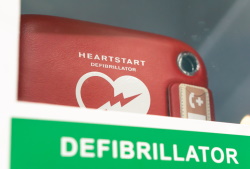Introduction
In the world of childcare, guaranteeing the highest requirements of safety and wellness is critical. Among the numerous strategies that add to a safe atmosphere for youngsters, proper hand hygiene techniques stick out as an essential component. This article explores the complex facets of hand hygiene, emphasizing its relevance in avoiding diseases and promoting overall health and wellness within child care settings.

Proper Hand Hygiene Techniques: An Important Part of Childcare Safety
When it involves guarding youngsters's wellness in child care settings, proper hand hygiene methods are non-negotiable. It's not practically cleaning hands; it's about instilling healthy routines that can dramatically minimize the spread of infections. According to health experts, efficient handwashing can reduce the danger of respiratory system health problems by approximately 20% and gastrointestinal diseases by about 50%.
Understanding the Relevance of Hand Hygiene
Hand hygiene plays a pivotal function in infection avoidance. Youngsters are particularly susceptible to infections due to their establishing immune systems and propensities to discover their environments with restricted understanding of bacteria. For that reason, training kids correct hand health strategies establishes the foundation for lifelong healthy habits.
Key Parts of Effective Hand Hygiene
To make certain reliable hand hygiene, a number of elements should be attended to:
- Soap and Water: The most effective method for cleansing hands. Hand Sanitizers: Helpful when soap and water are unavailable however must consist of at the very least 60% alcohol. Technique: Correct strategy includes scrubbing all surfaces of the hands for at the very least 20 seconds.
The Duty of Educators in Encouraging Hand Hygiene
Educators play an important function in cultivating an atmosphere where proper hand hygiene is highlighted and exercised.
Building Educator Confidence in Teaching Hand Hygiene
An educated instructor can with confidence show kids concerning the importance of washing hands. Training sessions focusing on HLTAID012 offer emergency treatment in education likewise highlight exactly how educators can incorporate emergency treatment understanding with health and wellness methods like proper hand hygiene.
Creating an Engaging Discovering Environment
Engaging approaches-- like interactive demonstrations or narration-- can make learning more about hand health enjoyable for children. Visual aids such as posters showing actions to clean hands correctly can reinforce learning.
Implementing Hand Hygiene Protocols in Child Care Centers
For child care facilities, having actually Click here for more info structured methods makes sure uniformity across all teachers and staff members.
Developing Written Procedures
Establishing clear created procedures for hand hygiene assists preserve a common practice throughout the facility. This includes:
- When to clean hands (e.g., before dishes, after using the bathroom) How to wash hands properly Monitoring compliance among staff
Incident Coverage Protocols Related to Health Breaches
In instances where proper hand hygiene isn't adhered to, having incident reporting methods permits centers to deal with these gaps effectively. Such actions not only right private behaviors yet additionally strengthen communal duty in the direction of maintaining health and wellness standards.

Choking Prevention: An Indispensable Part of Kid Safety
Choking prevention is another critical aspect of youngster safety and security that connects into total wellness administration within childcare settings.
Recognizing High-Risk Foods
Certain foods pose higher choking dangers than others. Educators needs cpr blended course to be trained to recognize these foods and carry out safety nets during dish times.
Teaching Children Safe Consuming Habits
Incorporating conversations on safe eating methods along with lessons on correct hand health can boost kids's understanding of individual safety and security during meals.
Managing Minor Wounds: A Complementary Skill Set
Accidents occur-- specifically with young kids that are normally interested and active.
First Aid Fundamentals for Caregivers
Training caretakers on exactly how to manage small injuries efficiently matches great hand hygiene practices. Knowledge from training courses like HLTAID012 qualification Australia gears up personnel with crucial abilities required for prompt feedback responsibilities when mishaps occur.
Childcare Centre Emergency treatment Package Essentials
Equipping childcare centers with emergency treatment sets tailored toward children's distinct needs ensures that small injuries are taken care of without delay while lessening infection threats via great hand health practices.
Recognising Bronchial asthma Effects: The Role of Health in Respiratory System Health
Asthma management is another measurement where great hand health adds positively.
How Infections Can Trigger Asthma Attacks
Respiratory infections can aggravate Additional hints asthma signs and symptoms in youngsters. Appropriate handwashing lowers these infections' prevalence amongst children with bronchial asthma, highlighting once more exactly how essential correct hand hygiene strategies are in securing youngsters's health.
Playground Incidents: Ensuring Safety With Preparedness
Playgrounds are typically hotspots for mishaps; hence, knowing exactly how to manage them is crucial.

Immediate Response Responsibilities Adhering to Incidents
Educators require clear standards on just how to react promptly after play ground accidents while adhering purely to sanitation protocols post-incidents-- this means washing hands prior to dealing with any injuries suffered during play tasks.
Childproofing Methods: Preventative Steps Versus Accidents
While good health practices help alleviate threats related to germs and infections, childproofing techniques concentrate a lot more straight on protecting against mishaps altogether.
Creating Safe Play Environments
Effective childproofing includes reviewing play areas frequently while making certain that toys are disinfected frequently as part of well-known proper hand health strategies within your center's routine.
Epipen Management: Getting ready for Allergic Reactions Safely
In cases where allergies present considerable risks-- and epinephrine auto-injectors (epipens) may be required-- comprehending how tidiness influences management comes to be vital.
Safe Practices Around Epipen Administration
Staff needs to always guarantee their hands are clean before administering epipens or dealing with any kind of medication. This decreases contamination risk that might impact children's health negatively throughout allergic reactions or emergencies involving extreme asthma signs and symptoms or other clinical crises.
FAQs Regarding Appropriate Hand Hygiene Techniques
li7/ol1/li8li8/ol2li9# Just how usually must kids wash their hands?- Children ought to wash their hands before consuming, after utilizing the washroom, after playing outside or with animals, and whenever they look dirty.
- Yes! Programs like HLTAID012 certification Australia provide customized training concentrated especially on emergency treatment methods relevant within educational environments.
- Resources such as "Emergency Treatment Essential For Parents Australia" offer practical advice customized in the direction of day-to-day scenarios run into by family members elevating young kids!
Conclusion
In summary, understanding proper hand health techniques is indisputably an important component of child care security. By instilling these techniques early and offering durable training for instructors-- combined with thorough safety methods-- we develop nurturing environments where kids grow free from preventable diseases and crashes alike! From taking care of minor wounds successfully complying with events at play through identifying asthma symptoms prompt-- all of it circles back down once more towards one basic fact: Good practices created today lead straight right into healthier tomorrows!